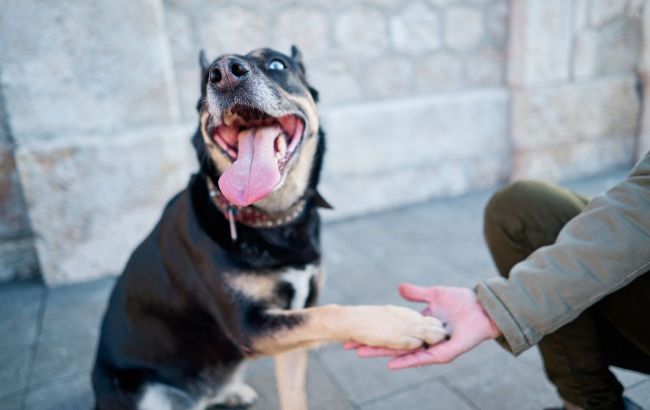How many times a day you should walk your dog: Tips for different breeds
 How much you should walk your dog every day and how to do it properly (photo: freepik.com)
How much you should walk your dog every day and how to do it properly (photo: freepik.com)
Is one or two walks a day enough for a dog? Most owners don’t realize how the walking schedule affects the physical and mental health of their pet. How much should you walk a dog to keep it healthy and happy?
Why does a dog need a walk
When you say that a dog needs to take care of its business (i.e., go to the bathroom), you're right. But that's just one important factor out of many others:
- Physical activity (maintaining muscle tone, weight, cand ardiovascular health);
- Mental stimulation (exploring scents, sounds, new environments);
- Socialization (interaction with other animals and people);
- Reducing stress and boredom;
- Prevention of destructive behavior (excessive barking, overly active play indoors, chewing on things, and furniture);
- Strengthening the bond between the owner and the dog.
How many times a day should you walk your dog
Most veterinarians recommend: at least twice a day, with a duration of 20 to 60 minutes, but ideally, three to four walks. This applies not only to physiological needs but also to socialization, reducing anxiety, and preventing obesity.
For an adult medium-sized dog (Labrador, Spaniel, Shepherd):
- In the morning (15-30 minutes).
- During the day or evening (40-60 minutes of active movement).
- Late in the evening (a short walk before bed).
For puppies and senior dogs, the schedule changes:
- Puppies up to 6 months – 4-6 walks a day.
- Older dogs need less exertion, but regularity is maintained.

A walk for a dog is necessary not only for toileting (photo: Getty Images)
Common mistakes during walks
One walk per day is not enough for a healthy dog.
Boring routes without variation decrease stimulation and cause stress.
Constant rushing doesn’t give the dog time for sniffing activity.
Lack of consistency – it’s better to have two 30-minute walks than one 1-2 hour walk (consistency gives the dog a sense of stability and satisfies all its needs).
How to walk your dog correctly:
- At least 2 full walks every day.
- Change up the routes and rhythm.
- Let your dog sniff everything it wants – it’s like social media for dogs.
- Avoid only paved routes – both dirt and grass are necessary.
- Quality is more important than time – the walk should be interactive (exploring, sniffing, playing, running).
Who needs more walks
Veterinarians emphasize that not all breeds need the same level of activity. Focus not only on the dog's size but also its temperament and physiological needs.
High walking demand (3-4 times a day, active walks):
- Shepherds (German, Belgian, Malinois)
- Border Collies
- Huskies and Malamutes
- Dalmatians
- Jack Russell Terriers
- Weimaraners
These breeds were bred for work or running, so they require regular, intense physical activity to stay healthy.
Moderate demand (2-3 walks, moderate activity):
- Labradors and Retrievers
- Cocker Spaniels
- Beagles
- Shih Tzus
- Corgis
These dogs adapt well to city life but require structured walks with elements of play and sniffing.
Minimal walking demand (2 short walks a day):
- Chihuahuas
- Pekingese
- Yorkshire Terriers
- Pugs
- Bulldogs (French, English)
These breeds are less physically resilient and often have breathing or joint issues. For them, the frequency of walks is more important than their duration.
If your dog has health problems, restrictions (such as on time and intensity) may be necessary – this should be discussed with your veterinarian.
However, remember that even if you have a breed suited for home life or a dog with health issues, don’t skip walks. A dog that hasn’t seen the outdoors for several days is at a higher risk of anxiety, obesity, and heart problems.

It’s better to walk twice a day for 30 minutes than once, irregularly (photo: Getty Images)
What happens if your dog doesn’t get enough walks
The most common mistake owners make is underestimating the importance of regular and meaningful walks.
Insufficient walking is not just about failing to meet a physiological need; they are a serious restriction for the dog that can lead to stress, anxiety, and behavioral issues, which will later need to be corrected with the help of a dog trainer.
Dr. Jerry Klein, Chief Veterinarian of the American Kennel Club (AKC), explains that every dog is unique and there is no universal formula. He advises pet owners to observe their dogs, paying attention to their energy and behavior at home after a walk. He also suggests not hesitating to ask a veterinarian about the optimal schedule for the dog, based on its specific needs.
How to tell if your dog needs a walk
Observe your pet and learn to listen to it. The main signs that your dog wants to go outside are:
- Restlessness
- Destructive behavior
- Excessive barking
- Lethargic behavior (a sign of a lack of movement and stimulation)
- The dog often approaches the front door
- Sits by the leash or hook in the hallway
You may be interested in:
Sources used in this article: VetHelpDirect, The Guardian, Newsweek, World Small Animal Veterinary Association (WSAVA).

